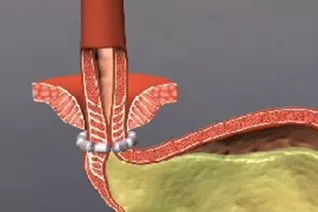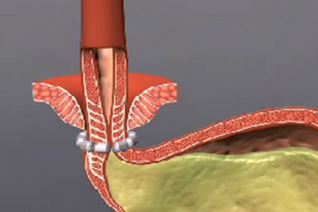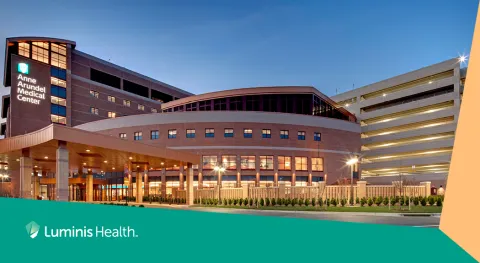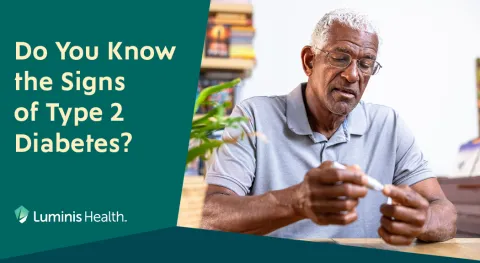by Luminis Health

Almost everyone suffers from the occasional bout of heartburn around Thanksgiving. But for millions of Americans, this discomfort isn’t just a holiday occurrence.
Gastroesophageal reflux disease (GERD) occurs most commonly when the valve between the stomach and the esophagus, known as the lower esophageal sphincter, does not function properly. This allows stomach contents to flow back up into the esophagus, causing frequent heartburn and acid indigestion. Less commonly, symptoms may include difficulty swallowing, dry cough, asthma, wheezing, sore throat, hoarseness, nausea, vomiting, dental erosion and bad breath.
It’s highly advised that you consult with a physician if you experience any of these symptoms continuously for more than two weeks while taking over-the-counter antacids. In rare cases, GERD has been known to cause more serious health conditions such as esophageal cancer, when left untreated.
Getting a Grip on GERD
Lifestyle changes are often the first recommended course of treatment for managing GERD symptoms. These simple approaches include:
- Maintaining a healthy weight
- Avoiding tight-fitting clothing
- Avoiding certain trigger foods and drinks such as fatty or fried foods, tomato sauce, alcohol, chocolate, garlic, onion, and caffeine
- Eating smaller meals slowly
- Waiting at least three hours after eating before lying down or going to bed
- Elevating the head of your bed
- Quitting smoking
When these approaches fail, your physician may suggest medication. Increased focus on GERD over the past decade has led to the development of many reliable over-the-counter and prescription options. These range from antacids to neutralize acid in the stomach to medications that actually block acid production or cause the stomach to empty faster. Your physician will work with you to determine which approach is best for your particular case.
If lifestyle changes or medication don’t offer relief from your symptoms, then surgery may be the next course of action.
For years, Nissen fundoplication has been the “go-to” surgery for GERD. During this laparoscopic procedure, the upper part of the stomach is used to create a new anti-reflux barrier around the lower esophageal sphincter (LES). This strengthens the sphincter and prevents acid reflux. A hiatal hernia, if present, is also repaired. Current long-term success rates for this procedure when performed by expert surgeons in dedicated centers are between 90 and 95 percent.
The LINX ® Reflux Management System – the latest surgical advance for treating GERD – achieves results approaching those of Nissen fundoplication, but with a tiny magnetic device. During this laparoscopic procedure, the bracelet-shaped magnet is inserted at the base of the esophagus where it works to close the LES immediately after swallowing, thereby restoring the body’s natural barrier to reflux.
While GERD can be persistent and it may take time to find the right treatment, it’s important not to lose hope. Your doctor should be able to direct you to an option that will ultimately provide you with relief.
Adrian Park, MD, is the Chair of Surgery and an internationally recognized specialist in minimally invasive surgery. He can be reached at Anne Arundel Medical Group Surgical Specialists at 443-481-6699.
This article was published in The Capital on Sunday, Nov. 23, 2014. See link.




